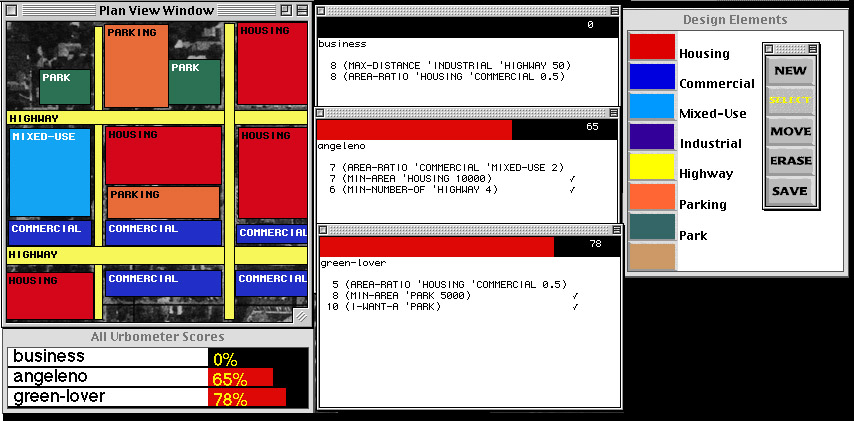MUD (Multiple-stakeholder Urban Design) is an environment for urban design. First, stakeholders articulate preferences for a neighborhood design scenario. They use a simple language to describe an “agenda” that sets criteria such as preferred ratios of land use, minimum and maximum distances between different uses. The agenda also sets relative values for each criterion: “The ratio of housing to parkland should be at least 3:1, and I place a weight of 6 (on a scale of 10) on this criterion”. Then they make proposals, placing land use elements onto a neighborhood ground plan. As each stakeholder proposes decisions, the MUD program scores the developing design against the other stakeholder agendas. It uses graphic “urbo-meters” to show how well the design satisfies each agenda.
1997 MUD: Exploring Tradeoffs in Urban Design, Parker, L., A. Elliott, and M.D. Gross, Computer Assisted Architectural Design Futures ‘97, R. Junge, ed., Kluwer, Dordrecht, pp. 373-388.[pdf]
